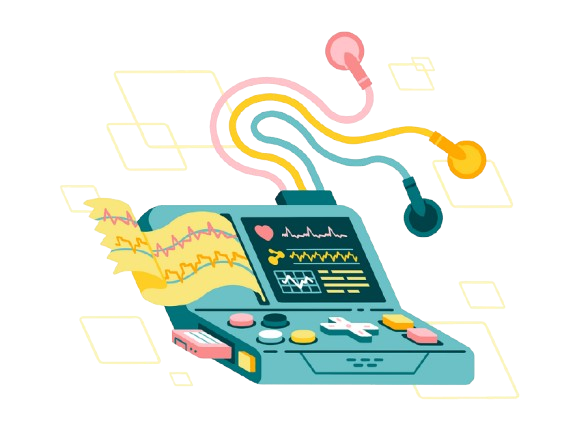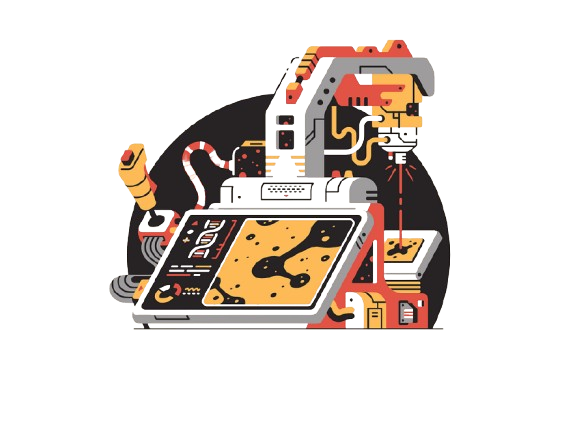PCG Signal Analysis with Adaptive Filtering
Adaptive filtering is a method for identifying and eliminating noise from a signal. Our project focuses on the use of adaptive filtering to remove noise from phonocardiogram (PCG) signals.
The PCG signal is a non-invasive method for diagnosing heart diseases. The project aims to develop a system that can accurately detect heart diseases by analyzing the PCG signal using adaptive filtering.
View Code
Project Overview

In this project, adaptive filtering is applied to PCG signals to enhance their quality, potentially leading to more accurate heart sound analysis and diagnosis.
Key Features
Multi-stage Feed-forward Adaptive Filter
- Utilizes multiple stages of filtering for enhanced noise reduction
- Each stage builds upon the improvements made by the previous stage
Automatic Adjustment of Filter Stages
- The system can dynamically adapt the number of filter stages based on signal quality
- Optimizes computational efficiency while maintaining high performance
Adaptive Algorithm Switching
- Alternates between Least Mean Squares (LMS) and Sign-LMS algorithms
- Balances between convergence speed and stability for optimal performance
Configurable Filter Parameters
- Adjustable filter length for fine-tuning the trade-off between noise reduction and computational complexity
- Customizable step size (learning rate) to control adaptation speed and stability
Synthetic PCG Signal Generation
- Includes capability to generate synthetic PCG signals for testing and validation
- Allows for controlled experiments with known signal characteristics
Customizable Noise Addition
- Can add controlled amounts of noise to clean signals
- Enables testing of the filter's performance under various noise conditions
Real-time Signal-to-Noise Ratio (SNR) Calculation
- Continuously measures SNR improvement
- Provides quantitative assessment of filter performance
Visualizations of Signal Processing Stages
- Generates plots of original, noisy, and filtered signals
- Enables visual inspection and comparison of filter effectiveness
Flexible Input Handling
- Can process both synthetic and real PCG recordings
- Adaptable to various PCG signal formats and sampling rates
Performance Metrics Reporting
- Calculates and reports key performance indicators like SNR improvement
- Facilitates objective evaluation and comparison of different filter configurations
Modular Design
- Separates signal generation, noise addition, filtering, and analysis components
- Allows for easy extension and modification of individual components
Scalable Processing
- Capable of handling both short PCG segments and longer recordings
- Suitable for both quick tests and extended monitoring scenarios
Error Analysis
- Computes and tracks error signals throughout the filtering process
- Useful for debugging and fine-tuning filter performance
Adaptive to Various Noise Types
- Effective against different noise sources common in PCG recordings (e.g., respiratory sounds, ambient noise)
- Robust performance across diverse recording conditions
Meet our Team
Student 1
Lorem ipsum dolor sit amet, consectetur adipiscing elit. Sed do eiusmod tempor incididunt ut labore et dolore magna aliqua.
Learn MoreStudent 2
Lorem ipsum dolor sit amet, consectetur adipiscing elit. Sed do eiusmod tempor incididunt ut labore et dolore magna aliqua.
Learn MoreStudent 3
Lorem ipsum dolor sit amet, consectetur adipiscing elit. Sed do eiusmod tempor incididunt ut labore et dolore magna aliqua.
Learn MoreStudent 4
Lorem ipsum dolor sit amet, consectetur adipiscing elit. Sed do eiusmod tempor incididunt ut labore et dolore magna aliqua.
Learn MoreReports
Project Reports and Documentation
Reports and documentation related to the project are available for download. Click the button below to view and download the reports. (Includes presentations, reports, and more)
View Reports
Resources
View our resources used in the project
References and resources used in the project are available for further reading. Click the button below to view the resources. (Includes research papers, articles, and more)
View Resources